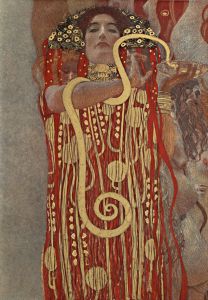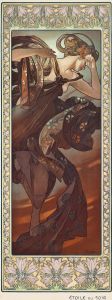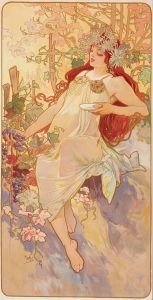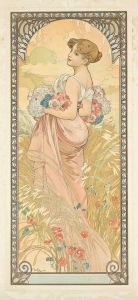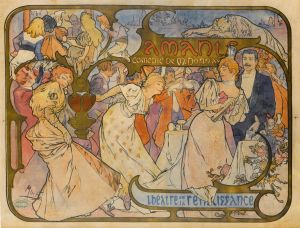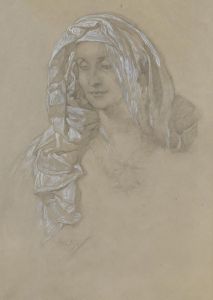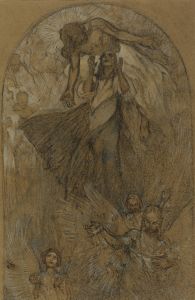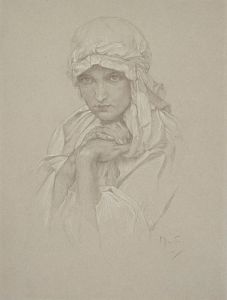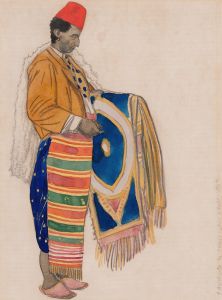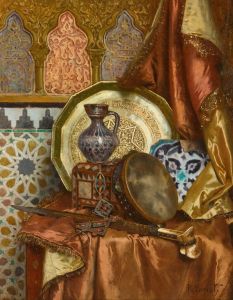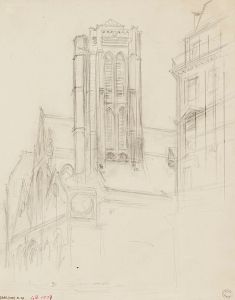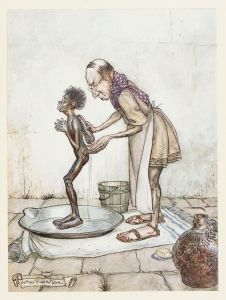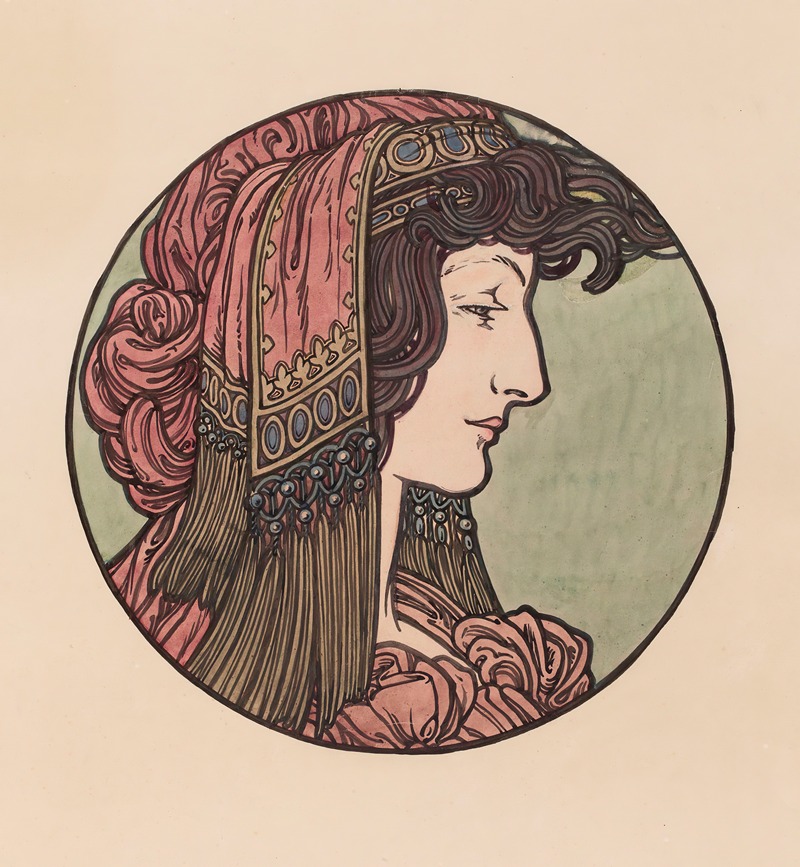
Vitrail pour la façade de la boutique Fouquet
A hand-painted replica of Alphonse Mucha’s masterpiece Vitrail pour la façade de la boutique Fouquet, meticulously crafted by professional artists to capture the true essence of the original. Each piece is created with museum-quality canvas and rare mineral pigments, carefully painted by experienced artists with delicate brushstrokes and rich, layered colors to perfectly recreate the texture of the original artwork. Unlike machine-printed reproductions, this hand-painted version brings the painting to life, infused with the artist’s emotions and skill in every stroke. Whether for personal collection or home decoration, it instantly elevates the artistic atmosphere of any space.
Alphonse Mucha, a renowned Czech artist, is celebrated for his distinctive Art Nouveau style, which is characterized by intricate lines, floral motifs, and elegant female figures. One of his notable works is the "Vitrail pour la façade de la boutique Fouquet," a stained glass design created for the jewelry shop of Georges Fouquet in Paris. This collaboration between Mucha and Fouquet is a significant example of the synergy between art and commerce during the Art Nouveau period.
Georges Fouquet was a prominent Parisian jeweler who sought to distinguish his boutique with a unique and artistic flair. In 1901, he commissioned Mucha to design the interior and exterior of his new shop located at 6 Rue Royale. Mucha's involvement in this project extended beyond traditional painting; he was responsible for the entire aesthetic of the boutique, including furniture, lighting, and decorative elements, which were all designed to harmonize with his artistic vision.
The "Vitrail pour la façade de la boutique Fouquet" was an integral part of this comprehensive design. The stained glass work exemplified Mucha's ability to translate his signature style into different mediums. Although specific details about the stained glass itself are limited, it is known that Mucha's designs for the Fouquet boutique were characterized by their flowing lines, natural forms, and the use of vibrant colors. These elements were typical of Mucha's work and contributed to the overall Art Nouveau aesthetic of the shop.
The collaboration between Mucha and Fouquet was not only a commercial success but also an artistic triumph. The boutique became a landmark of Art Nouveau design, attracting attention from both the public and critics. Mucha's work for Fouquet was celebrated for its innovative approach and its ability to elevate commercial spaces into realms of artistic expression.
Unfortunately, the original Fouquet boutique did not survive in its entirety. However, parts of the interior, including some of Mucha's designs, were preserved and are now housed in the Carnavalet Museum in Paris. This preservation allows contemporary audiences to appreciate Mucha's contribution to the Art Nouveau movement and his impact on commercial art and design.
Mucha's work for Fouquet is a testament to his versatility as an artist and his ability to adapt his style to various forms and functions. It highlights the importance of collaboration between artists and businesses during the early 20th century, a time when art was increasingly being integrated into everyday life and commercial environments.
In summary, Alphonse Mucha's "Vitrail pour la façade de la boutique Fouquet" is a significant example of Art Nouveau design, reflecting the artist's distinctive style and his successful collaboration with jeweler Georges Fouquet. Although the original stained glass and boutique no longer exist in their entirety, Mucha's influence on the project remains an important part of his artistic legacy and the history of Art Nouveau.





